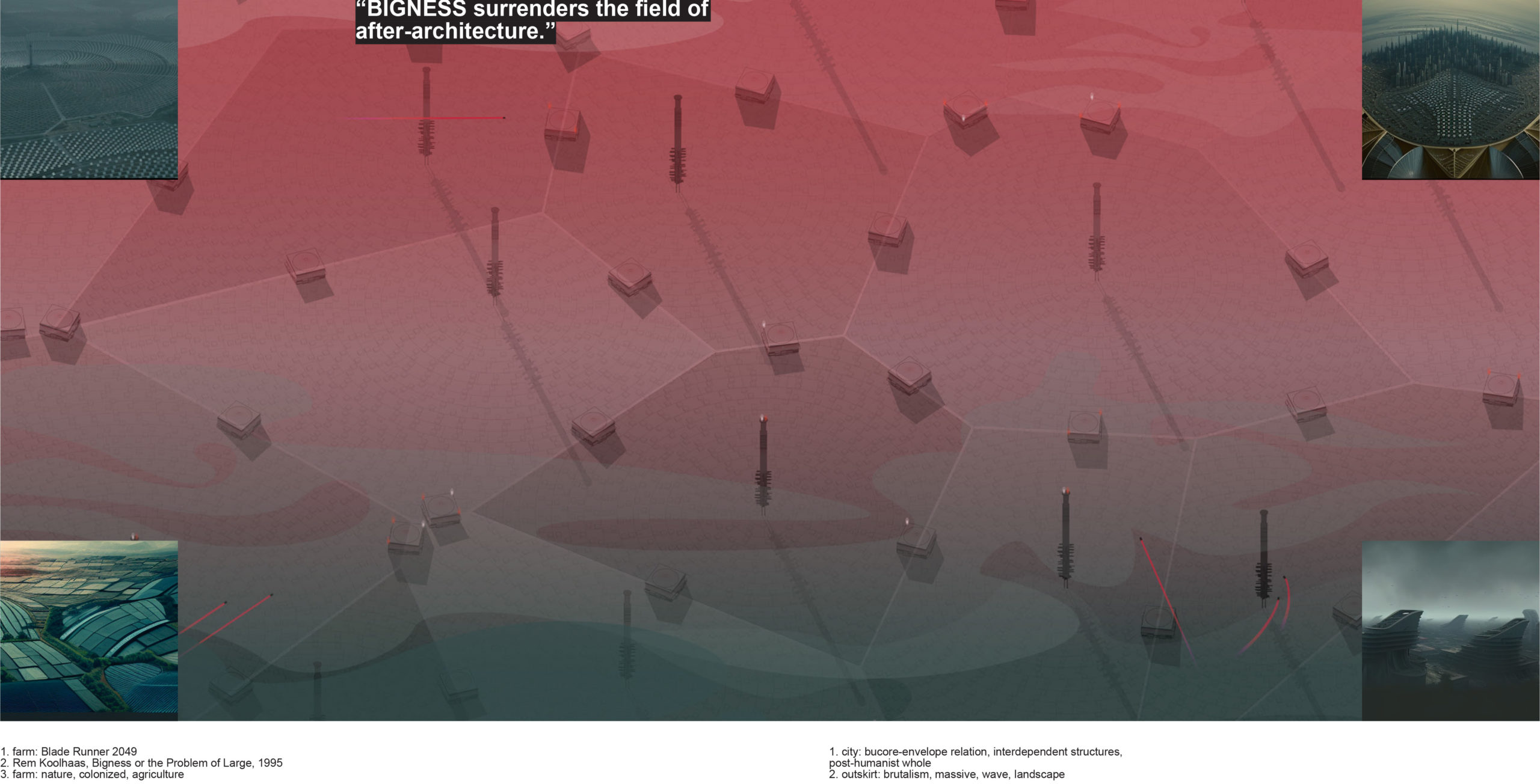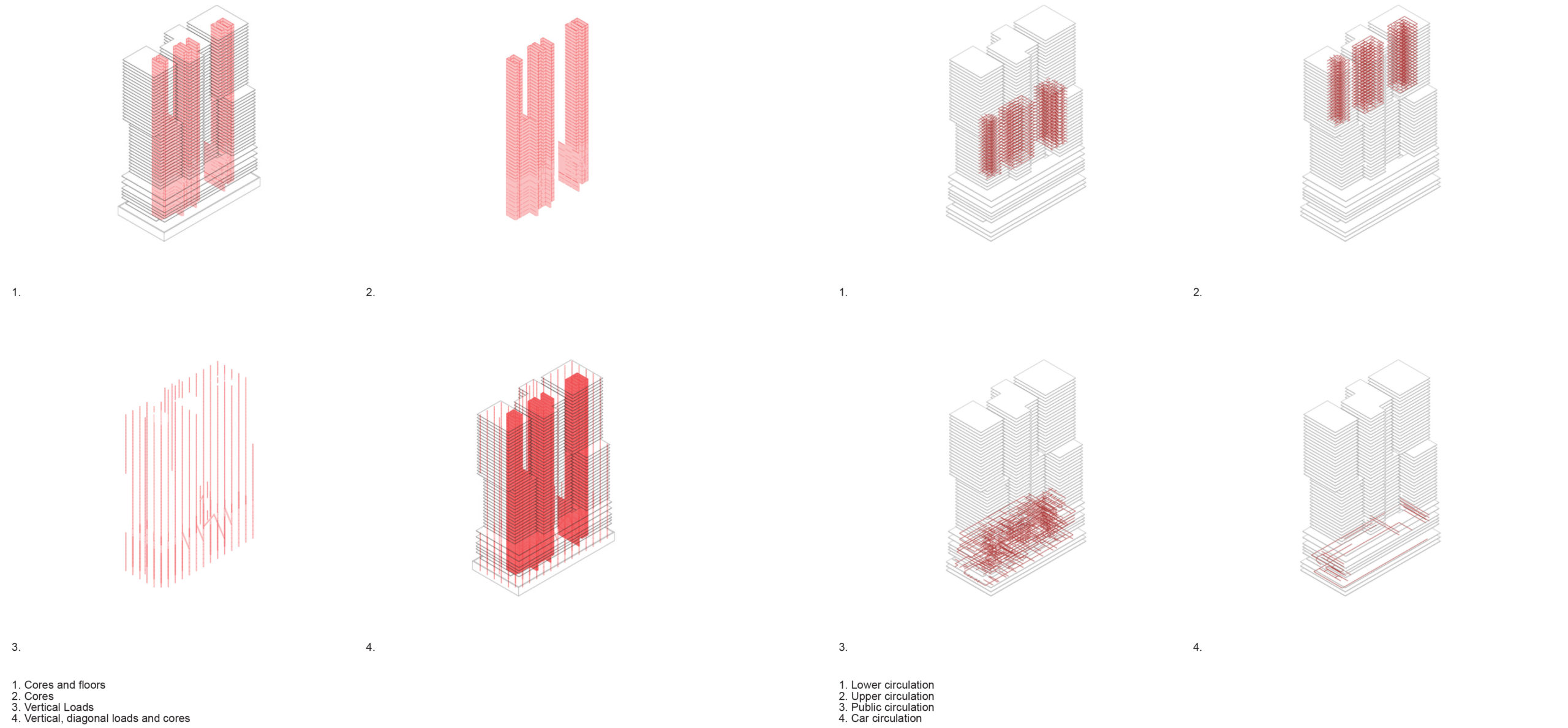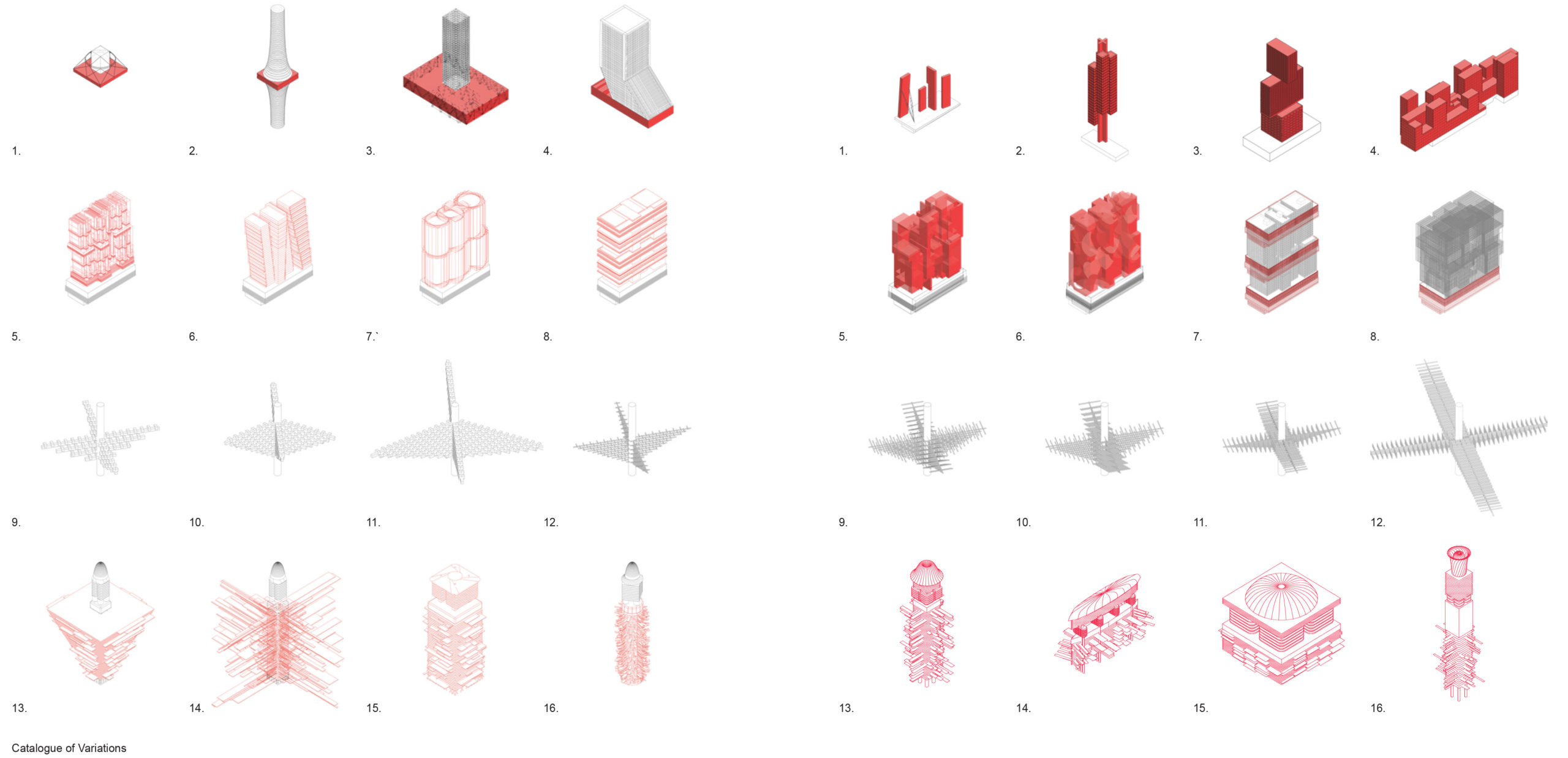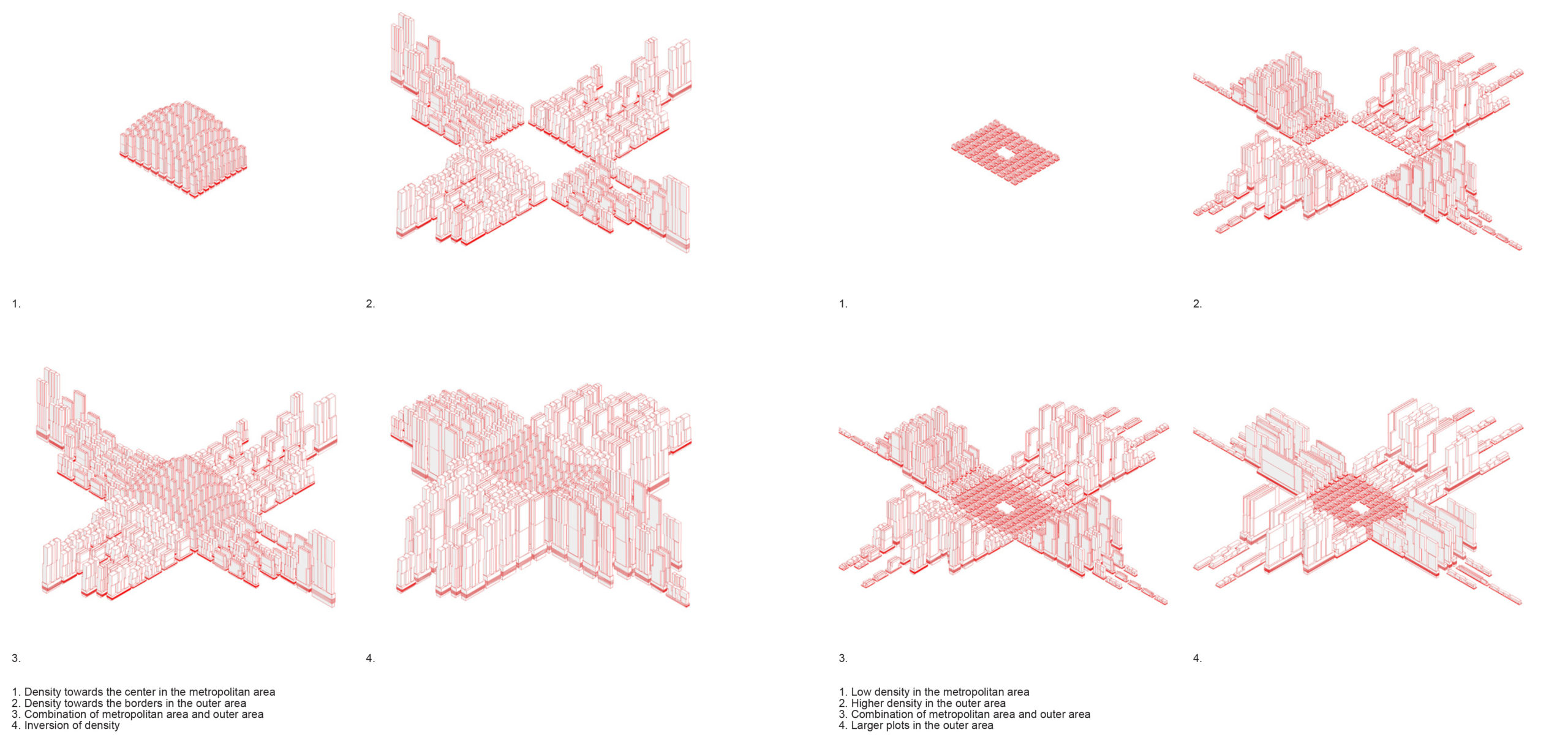Discourses of Verticality: Vignettes on (post)Metropolitan Urbanisms
It all started from the Manhattanism proposed by Rem Koolhaas in Delirious New York. The theory explains the product of the verticalization of the city – skyscrapers, which stand neatly and compete with each other. The only thing in common is the small squares extruded by the grid- a differentiated urban plane called Laboratories. Since then, experiments on top of the laboratory have expanded infinitely.The desire to expand makes the skyscraper abandon its former protagonist which is form, and the ground of function is re-elevated. Skyscrapers desperately want to break free from the shackles of the laboratory.

In the case Cluster In The Sky by Arata Isozaki, it can be seen that the structures that continue to grow vertically begin to consciously and systematically expand horizontally, and the structures form a new urban system with each other. At this point the rules of Manhattanism are obsolete.Because there is no resistance to prevent the structure from growing infinitely to all dimensions.

Finally we have come to the era of BIGNESS. An incomprehensible enormity. The structure itself has become so huge that it has become a “city” itself, and its base location, the city it belongs to, its functions, and even what it serves are no longer important. It becomes a new landform on the earth’s crust.

Models of Verticality: Laboratories, Clusters and Farms
For a deeper understanding of the case studies, we went through a series of analysis of different aspects for each one of them, such as: structure, circulation, constitution and connection. After we decoded each one of the case studies, we gave different parameters to them and made a series of geometrical variations. This way, we posed the question of “what if”: What if the buildings were used for another function? What if they were made of different materials? What if the logic it derives from is further explored?
A Building of Buildings: De Rotterdam – OMA
De Rotterdam building is one of the many projects of OMA in which the line between individuality and multiplicity becomes blurry. This exploration comes back from the City of the Captive Globe, where the concept of LABORATORY is created. It represents the idea of a simple orthogonal shape that can be repeated infinitely through the territory in a homogenous way, while at the same time giving complete freedom to whatever is built on top of it.

The Part and the Whole: Clusters in the Air – Arata Isozaki
At the end of the Second World War, an architectural and urbanistic movement emerged, known as Metabolism. The Japanese architects started to explore the relationship between the human being and the constructed environment. The Japanese architect Arata Isozaki developed one of his non built projects: the futurist master plan, known as City in the Air, in the Shinjuku neighborhood in Tokyo, Japan.

A post-human skyscraper: MVRDV – Pig City
“Can we combine organic farming with an intensive concentration of the production-activities so that there would be enough space for other activities? Is it possible to compact pig production within concentrated farms eliminating the need for costly and polluting transportation and distribution? Can we through concentrated farming activities create the economic incentive for a communal slaughterhouse, a self-sufficient fertiliser recycler and a central food core?”

Catalogue of Variations

Landscapes of Verticality: (post)Metropolitan, the Ultra City
Through the analysis of the case studies and the individual variations of each one of them, we start to think about the landscapes of verticality. All of these proposals speak about a breaking point for the city, when it is not longer detached from the territory, but rather overwhelms it.
Post(Metropolitan)
In this drawings different rectangular grids are expanded in four directions, representing the center of a metropolitan city and its surroundings, that vary in scale and density. The building of OMA, De Rotterdam, is then mapped to each one of the rectangles of the grid. These variations show how we can think of different urban models for the metropolitan logic of urbanization and propose a catalog of (post)metropolitan landscapes.

The Ultra City
Different aggregation structures, such as the tree and the spiral, and different patterns of aggregation, such as the hexagonal, octogonal and tetragonal grids, remap the variations for the modules of the City in the Sky by Arata Isozaki. Through them we can think of different ultra-cities that go from more dense centers to more dense borders.

The Hyper Rural
The variations of the Pig City by MVRDV are connected following different grid structures allowing more or less light, space, envelope area and height that could be more or less suitable for different products. On a second moment, some variations are chosen and mapped to different agricultural partitions that are alterated by the possible irregularities of the territory.



